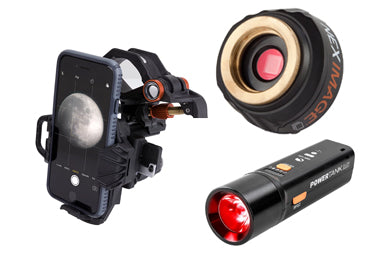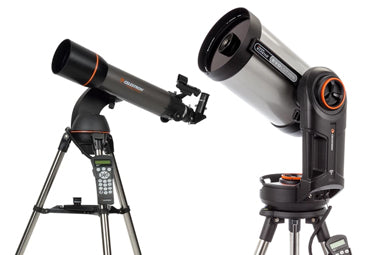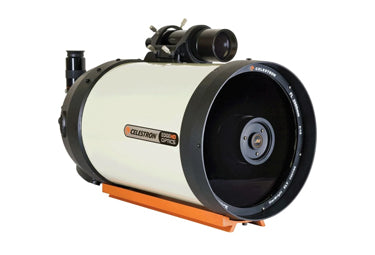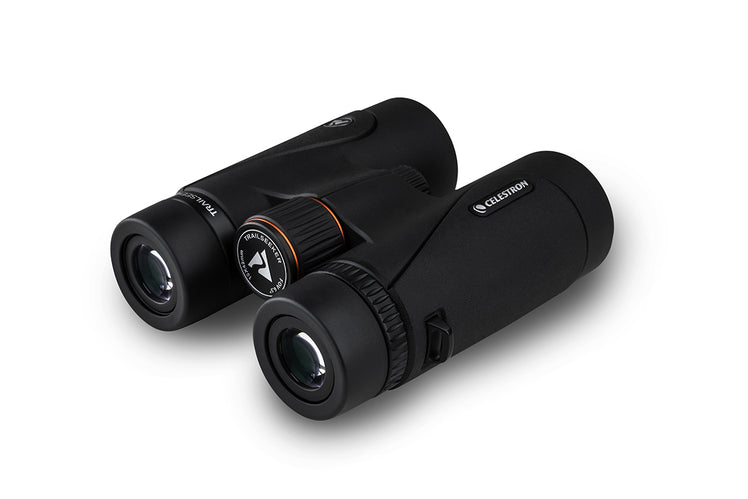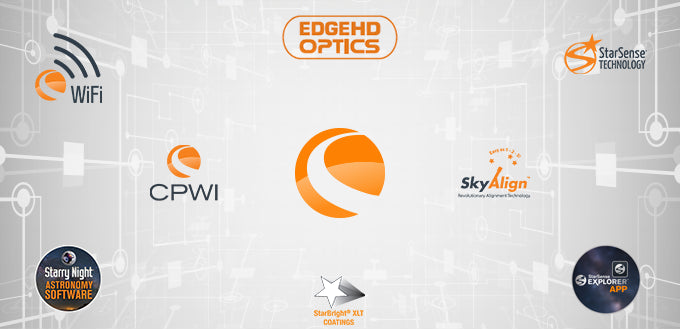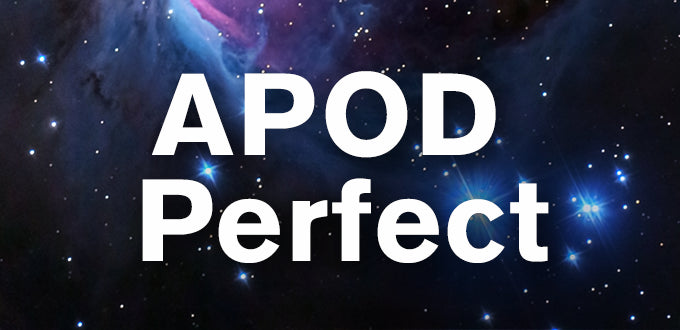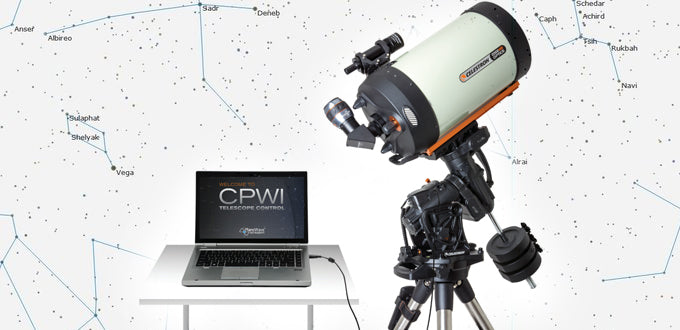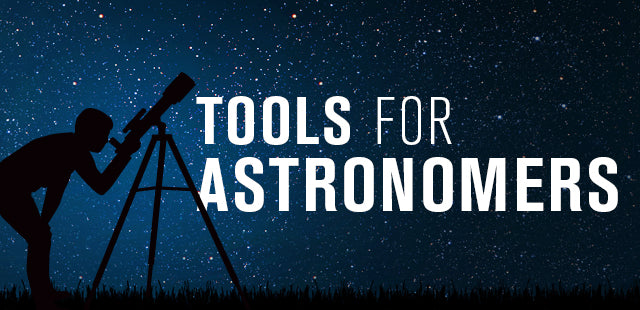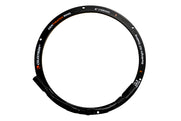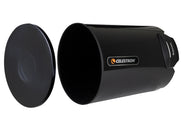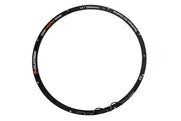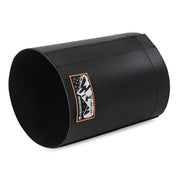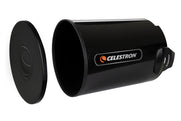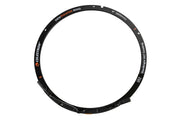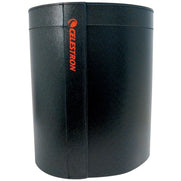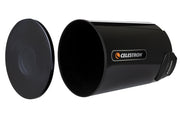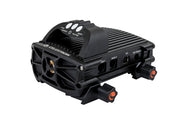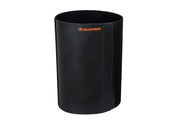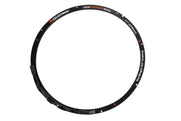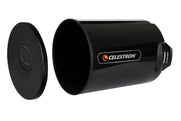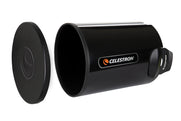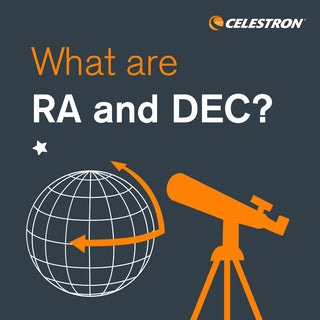The Ultimate Guide to Observing the Summer Sky (Northern Hemisphere)
June 5, 2023

Summer in the Northern Hemisphere is here, bringing long, golden days and warm, inviting nights. Spend your afternoons at the beach, fire up the grill, or cheer on your team at the ballpark. Then, when the sun sets and the sky begins to darken, the real magic unfolds overhead.
Though summer nights are short, they’re packed with celestial wonders—brilliant constellations, glowing nebulae, and sparkling star clusters. The Milky Way stretches across the sky in all its glory, a luminous river of light. And in August, one of the year’s most spectacular shows takes center stage: the Perseid meteor shower.
If you're just getting started in astronomy with a telescope or binoculars, this guide will help you find your way. We’ll introduce you to Summer’s most iconic constellations and must-see celestial targets.
So grab your bug spray, head outside after dusk, and let the Summer sky dazzle you.
Important 2025 Dates and Sky Events
 |
June 20: Summer Solstice Summer officially begins in the Northern Hemisphere at 10:42 p.m. EDT. It’s the longest day of the year, as the Sun reaches its northernmost point in the sky. |
|
 |
July 4: Mercury at Greatest Eastern Elongation Catch elusive Mercury shining at magnitude +0.5 in the evening sky—its best appearance of the season. Look low in the western sky just after sunset. |
|
|
July 10: Buck Moon The Buck Moon rises on July 10, 2025. Named by early Native American tribes, this full Moon marks the time when male deer begin growing new antlers. It’s also known as the Thunder Moon, reflecting July’s frequent summer storms, and the Hay Moon, signaling the season’s traditional hay harvests. |
|
|
July 28-29: Delta Aquarids Meteor Shower The Delta Aquarids will peak on the night of July 28 into the early morning of July 29. While considered a moderate shower, it can still produce up to 20 meteors per hour—each a glowing fragment from the sun-grazing comets Marsden and Kracht. With a crescent Moon setting early, this year offers ideal, dark-sky conditions for a beautiful display. For the best views, head to a dark location after midnight and look toward the constellation Aquarius—though meteors can appear anywhere in the sky. |
 |
August 9: Sturgeon Moon The Sturgeon Moon rises on August 9, named by early Native American tribes for the time when large sturgeon were most readily caught in the Great Lakes and major rivers. This full Moon carries centuries of tradition and is also known as the Green Corn Moon, marking the ripening of corn, and the Grain Moon, a symbol of the late-summer harvest. |
 |
August 12: Conjunction of Venus and Jupiter Look to the pre-dawn sky on August 12 for a stunning celestial pairing. Venus and Jupiter will appear strikingly close—just 51 arcminutes apart—as they share the same right ascension in a phenomenon known as an appulse. Venus will blaze at magnitude –4.0, outshining Jupiter at –1.9, with both planets nestled in the constellation Gemini. This breathtaking sight will be easily visible to the naked eye and even more dazzling through binoculars. |
 |
August 12-13: Perseids Meteor Shower One of the year’s most spectacular meteor showers, the Perseids originate from debris left by Comet Swift-Tuttle, discovered in 1862. Active from July 17 to August 24, they peak the night of August 12 into the morning of August 13, with 50–75 meteors per hour under ideal conditions. This year, a waning gibbous Moon will brighten the sky, limiting visibility to the brightest meteors—but patient observers in dark areas after midnight may still catch plenty. Meteors will appear to radiate from Perseus but can streak across the entire sky. |
 |
August 19: Mercury at Greatest Western Elongation Mercury reaches its greatest western elongation—18.6° from the Sun—on August 19. It’s the best chance to spot the elusive planet as it appears highest in the morning sky. Look low on the eastern horizon just before sunrise. Shining at magnitude –0.2, Mercury will be visible to the naked eye under clear skies.
|
 |
September 7: Corn Moon Total Lunar Eclipse September’s Full Corn Moon coincides with a total lunar eclipse, visible across much of the world—including parts of North and South America, Europe, Africa, Asia, and Australia. The eclipse begins at 15:28 UTC, with totality from 17:30 to 18:53 UTC, peaking at 18:11 UTC. During totality, the Moon will turn a deep red, earning its “Blood Moon” nickname.
|
Popular Summertime Constellations and Asterisms
As June winds down, we say goodbye to the final traces of winter and spring in the night sky. The twin stars of Gemini—Pollux and Castor—dip below the western horizon, with Cancer the Crab not far behind. In their place, summer’s most brilliant constellations rise to take the spotlight.
From late June through late September, the Northern Hemisphere is graced by some of its most iconic celestial figures. While seventeen constellations are visible this season, about a dozen stand out with striking clarity. Some of the most recognizable include:
|
|
Summer Triangle The Summer Triangle is not an official constellation but a prominent asterism visible in the Summer night sky. Three well-known stars comprise the triangle: Deneb in Cygnus, Vega in Lyra, and Altair in Aquila. Use your imagination and connect the stars to see the Summer Triangle—no binoculars or telescope required! |
 |
Aquila Aquila, translated from Greek into "Eagle of Zeus," is named for Aetos Dios, the eagle that carried the god's thunderbolts. Aquila is located on the celestial equator and is visible from the Northern and Southern Hemispheres during Summer. It is home to one of the prominent stars in the Summer Triangle asterism, Altair. |
|
|
Corona Borealis Corona Borealis is one of the 48 constellations listed by the Greek astronomer Ptolemy in the second century, and its name translates to "Northern Crown" in Latin. Although it is a small constellation, it is easily recognizable in darker skies with a shape resembling a "C," depending on its orientation. Find Corona Borealis between the constellations Boötes and Hercules. |
 |
Cygnus Cygnus, the beautiful swan, can be seen "flying" through the stars of the Milky Way on Summer nights. Its name means "swan" in Latin. Cygnus also contains the asterism the Northern Cross, which appears exactly like its name. At the top of the cross or tail-end of Cygnus is Deneb, a magnitude 1.25 blue-white supergiant star. Deneb joins Altair and Vega to comprise the famous asterism, the Summer Triangle. |
|
|
Delphinus Delphinus means "dolphin" in Latin. According to Greek mythology, the sea god Poseidon sent a dolphin to find Amphitrite, the Nereid he wanted to marry. Delphinus is a small constellation cataloged by the Greek astronomer Ptolemy in the second century. The constellation is easily recognizable by its diamond-shaped pattern formed by its brightest stars, known as Job's Coffin, which outlines the dolphin's body. It is home to several deep sky objects, such as globular clusters NGC 6934 and NGC 7006. |
 |
Hercules Hercules is a prominent summertime figure and the sky's fifth-largest constellation. The Greeks called him Heracles, but the Romans changed his name to Hercules. The constellation lies upside down just south of Draco's head and is easier to spot in darker skies than from the city since it has many dim stars. A "keystone" of four third and fourth-magnitude stars marks Hercules' torso. The famous globular cluster, Messier 13, is on the western edge. |
|
|
Libra A medium-sized constellation, Libra ranks 29th in size among the 88 constellations in the night sky. It is one of the thirteen zodiac constellations Ptolemy cataloged in the second century. Libra translates to "the weighing scales" in Latin. Ancient artists usually depicted Libra as the scales of the Greek goddess of justice, Dike, or Astraea. In modern times, Libra is a universal symbol of balance, harmony, and justice. Libra contains three stars with known exoplanets. The meteor shower Delta Librids is associated with Libra. |
 |
Lyra Lyra resembles an ancient stringed musical instrument similar to a harp. It is one of the 48 constellations the Greek astronomer Ptolemy cataloged in the second century. Look for it near Cygnus to the west and Hercules to the east. Its bright star, Vega, is the fifth brightest star in the sky at magnitude 0.03 and is one of the three bright stars that form the Summer Triangle asterism. The annual Lyrids meteor shower radiates from Lyra each April. Lyra is easy to find due to its proximity to Cygnus and the unmistakable bright star Vega. |
|
|
Sagitta Sagitta, which means arrow in Latin, is one of the smaller and dimmer constellations in the sky that the Greek astronomer Ptolemy cataloged in the second century. Sagitta consists of four stars in the shape of an arrow located north of the bright star, Altair. It contains some notable deep sky objects, including the loose but stunning globular cluster Messier 71 (NGC 6838). |
 |
Sagittarius Sagittarius, the archer, is depicted as a centaur—half man, half horse—poised to shoot with his bow and arrow. It is one of the most famous constellations of the zodiac and lies just south of the ecliptic. It is easily recognizable due to its brightest stars, which form the "teapot." Because Sagittarius lies in the Milky Way and is in the same direction as the Galactic Center, it contains a variety of well-known deep sky objects, including dwarf galaxies, nebulae, star clouds, and globular and open star clusters. |
|
|
Scorpius One of the most prominent zodiac constellations in the night sky, Scorpius is one of the few constellations that unmistakably resembles its namesake, a scorpion. You can discern its J-shaped body, complete with a stinger ready to kill its prey in the murky river of stars in the Milky Way. In Greek mythology, a scorpion was sent to kill Orion, and in the aftermath, the two constellations were placed on opposite ends of the sky, never to appear together again. When Orion sets in the western sky, Scorpius rises in the east, and vice versa. Because Scorpius is near the Galactic Center of the Milky Way, it also contains several notable deep sky objects, including many star clusters. The red supergiant star Antares marks the scorpion's heart, and its reddish color is striking to your eye and through a telescope. The stars Shaula and Lesath make up the scorpion's stinger. |
|
|
Vulpecula In Latin, Vulpecula translates into "the little fox." First introduced by Polish astronomer Johannes Hevelius, it lies within the Summer Triangle and consists of five stars no brighter than fourth magnitude. Vulpecula is home to the famous Dumbbell Nebula (Messier 27), the first planetary nebula discovered by Charles Messier in 1764. Vulpecula is also home to The Coathanger, also known as Brocchi's cluster (covered in more detail below). |
|
|
Coathanger The Coathanger, or Brocchi's cluster, is a tiny asterism whose pattern of stars appears just like its name—a coathanger! Its secondary name honors the 1920s American amateur astronomer Dalmiro Brocchi, who drew detailed finder charts of stars in the American Association of Variable Star Observers program and included this asterism in great detail. You can easily make out the Coathanger in binoculars or through a low-power, wide-field telescope, especially in dark skies, located in the constellation Vulpecula. To find it, draw an imaginary line from Vega to Altair. The Coathanger sits just above and to the right of the constellation Sagitta (inside the Summer Triangle). |

Top Summertime Celestial Objects
Now that we've explored some of summer's standout constellations and asterisms, it's time to dive into the celestial treasures they contain. From bright star clusters to glowing nebulae, summer skies offer a rich variety of targets—many visible through small to mid-sized telescopes (60mm to 8") and even binoculars.
For the best views, head away from city lights; darker skies reveal incredible detail. This season is especially rich in globular clusters, open star clusters, emission and planetary nebulae, and stunning double stars. While we can’t cover them all here, this guide highlights some of the most popular and rewarding summertime objects to observe.
|
|
Albireo At the head of Cygnus is the little yellow and blue double star, Albireo—always a popular target during Summer star parties. Some Southern California stargazers have dubbed Albireo the "UCLA Double Star." With side-by-side yellow and blue stars, it reminds locals of the university's colors. A small telescope or a high-powered binocular will split this colorful pair. Albireo was once considered a true binary star system, but there has never been evidence of orbital motions between the two stars. Astronomers now believe the two stars making up Albireo are a visual double, not a true binary. |
 |
Dumbbell Nebula (Messier 27) Look to the constellation Vulpecula for the beautiful and colorful Dumbbell Nebula (Messier 27). This planetary nebula is a dying star that has ejected its shell of hot gases into space for nearly 50,000 years! With a visual magnitude of 7.5, it looks like two whitish hazy light patches resembling a dumbbell in a telescope from a dark sky site. In long exposure astroimages, the nebula appears bluish/greenish in its core with some red on its outskirts. |
|
|
Eagle Nebula (Messier 16) Also known as Messier 16, the Eagle Nebula is one of the most popular celestial targets in the Summer skies for backyard stargazers. Located in the direction of Serpens the Serpent, it is one of the most famous celestial targets due to its appearance as a spread-out eagle and because of its iconic towering structures, the "Pillars of Creation." This nebula is an active star-forming region of gas and dust. The Eagle Nebula is a relatively young open star cluster with areas of dark nebulae that do not shine any light themselves but rather block light from other sources. In 2017, the Hubble Space Telescope captured a stunning image of the Pillars of Creation that remains one of the most spectacularly detailed celestial images today. |
 |
Epsilon Lyrae Located in the constellation Lyra, Epsilon Lyrae is the famous "double-double" star. To the naked eye, it appears as a single star. Through binoculars, it resolves into two stars, Epsilon 1 and Epsilon 2. Through a telescope using high power in steady-seeing conditions, each star resolves into two stars again for four stars! Epsilon Lyrae is easy to find because of its nearness to the bright star Vega. |
|
|
Hercules Cluster (Messier 13) The crown jewel of the Northern Hemisphere's globular clusters, the Hercules Cluster (Messier 13), contains roughly half a million stars. It appears like a ball of "diamonds on black velvet" through an 8" aperture telescope in dark skies. To locate M13, look for the "keystone," an uneven square of four third and fourth-magnitude stars marking Hercules' body. With an apparent magnitude of 5.8, M13 is barely detectable with the naked eye from a dark sky site. Because Hercules' path traverses high in the sky, Messier 13 is visible all night from May through July and part of the night in August and September. When you gaze at M13, remember the stars you see are 11 to 13 billion years old–almost the same age as the Universe! |
 |
Lagoon Nebula (Messier 8) The Lagoon Nebula (Messier 8) gets its name from a dark, winding dust lane that runs through the nebula. It is a large gas cloud (approximately 130 light-years across) near the center of our Milky Way Galaxy, about three times the size of the full Moon. It is bright enough to be seen with the naked eye from a dark sky, but using a binocular or telescope provides astonishing views. A bright open cluster, NGC 6530, comprised of young, hot, blue stars, lies within the nebula and is easily visible. M8 is an emission nebula. Like its wintertime counterpart, the Orion Nebula, M8 is a star-forming region—a stellar nursery where young stars are born. |
|
|
Milky Way Summer is, without a doubt, the best time to see the stunning Milky Way, the galaxy that includes our own Solar System. You only need your unaided eyes or a pair of binoculars to take in the view. However, you cannot see the Milky Way from the city due to all the light pollution. Plan to head out to the desert or mountains or take a ship far to sea on a moonless night. You will be rewarded with a view of millions of stars flowing like a river of milk across the sky. The Milky Way first appears, running along the northeast horizon early in the evening. As the night goes on, it rises higher until it reaches the zenith before heading back downwards as the night progresses. The galactic center and brightest part of the Milky Way lies in the direction of Sagittarius and Scorpius. |
 |
Swan Nebula (Messier 17) Also known as the Swan Nebula (Messier 17), the Omega Nebula shines at an apparent magnitude of 6.0, so you will get the best views in binoculars or a low-power telescope. It is near another prominent object, the Eagle Nebula. Both nebulae are near the center of our Milky Way galaxy, where many other bright star clusters and nebulae reside. Look for the teapot asterism in Sagittarius and draw an imaginary line from the bottom star Kaus Australis to Kaus Media. Then, move up about 15 degrees to M17. Both M17 and M16 are highest in the sky in late August evenings. |
|
|
Ring Nebula (Messier M57) The Ring Nebula (Messier M57) is a popular summertime celestial target for backyard astronomers—even those viewing from the city! M57 is a planetary nebula, a shell of gas released from a dying star. Located in the constellation Lyra with an apparent magnitude of 8.8, it is bright enough to be seen in small to medium-sized telescopes. It appears like a small, ghostly smoke ring or a small gray donut floating in space. It is easy to find because it lies about halfway between the bottom two stars of the harp–Gamma (γ) and Beta (β) Lyrae. While observing the Ring Nebula, use averted vision to look slightly off to its side, and the donut will begin to appear. Stare at it straight on, and it will vanish! Rods away from our retina (the center of our eyes) are more sensitive to faint light, so averted vision will help you see the Ring's structure. |
 |
Trifid Nebula (Messier 20) Discovered by Charles Messier in 1764, the Trifid Nebula (Messier 20) is a star-forming region located near the center of the Milky Way and just two degrees northwest of the Lagoon Nebula. Both objects are often imaged together in the same field of view. M20 has an apparent magnitude of 6.3 and appears as a fuzzy patch of light in binoculars. Its name means 'three-lobe.' The Trifid is easy to see in a telescope from a dark sky location. Some sports fans have noted that the three dark dust lanes resemble Nike's "Air Jordan" logo when viewed from a certain angle. |
|
|
Wild Duck Cluster (Messier 11) The Wild Duck Cluster (Messier 11) is a compact open cluster containing about 3,000 hot, young stars that resemble a loosely packed globular cluster through a telescope. It is named after some of its brighter stars, which form a triangle that resembles a flock of flying ducks. (Use your imagination!) M11 is in the constellation Scutum near the northern edge of a rich Milky Way star cloud called the Scutum Cloud. It has an apparent magnitude of 6.3. It is a popular summertime object because the views never disappoint. |
Helpful Observing Hints
|
Tip #1: Use an Astronomy App or Star Chart
|
Using a detailed star map is a great way to learn the positions of celestial objects at any time of the year. It may be an old-fashioned learning tool, but it just works. For those seeking a digital option, check out astronomy apps such as Celestron's SkyPortal Powered by SkySafari™ mobile app. This full-featured planetarium app is our gift when you purchase any Celestron telescope. SkyPortal instantly provides new telescope owners with information, including audio and written descriptions of various objects. It also offers celestial coordinates, a real-time sky map, rise and set times, and physical and orbital parameters. |
|
Tip #2: Seeing Conditions
|
Steady seeing conditions are critical while observing objects such as planets, the Moon, or double stars. However, poor seeing conditions less affect deep-sky objects such as nebulae and galaxies. Avoid nights of bad seeing when our atmosphere is turbulent, and your targets appear like shimmering blobs in your telescope's eyepiece. Start with low magnification and work up if the views remain steady. You will be amazed how sharp and detailed objects can appear during a night of good seeing. |
|
Tip #3: Telescope Cooldown
|
Cool your telescope down! Ensure you bring your telescope outside for about an hour before observing to acclimate to ambient temperature. Let your telescope reach thermal equilibrium with the outside air temperature to avoid distorted views. Telescopes with large mirrors and lenses may take longer to cool down properly for the best views. |
|
Tip #4: Collimation
|
Collimate, collimate, collimate! If you own a Newtonian or Schmidt-Cassegrain telescope, ensure your telescope's optics are collimated. It can be effective when it comes to discerning delicate details. If the optics are slightly out of alignment, you may cheat yourself out of seeing the clearest and sharpest details. Make it a habit to check collimation and adjust once your telescope is cooled down. Most refractor telescopes generally do not need to be collimated. |
|
Tip #5: Dress in layers
|
Summertime may feel like shorts and t-shirt weather for the most part, but it is best to keep a light jacket handy just in case the temperature drops at night. Warm Summer nights can bring mosquitoes and other four-, six- and eight-legged creepy crawlers out of the woodwork, so it is recommended to cover up and apply bug spray, or else your evening of stargazing may be unpleasant. |
Tip #6: Dew Prevention
If you own a Schmidt-Cassegrain or EdgeHD telescope, make sure you use a Dew Shield, a Dew Heater Ring, and a Smart Dew Heater Controller to help protect your telescope's front corrector plate from the effects of dew. You can browse our Dew Prevention products here:
Final Thoughts
Summer is a season for setting off on new adventures and creating unforgettable memories—and stargazing is one of the most inspiring ways to do both. Warm evenings offer the perfect chance to head outside and explore the night sky, whether you're flying solo or sharing the view with family and friends.
This summer’s sky has something for everyone: meteor showers, planetary pairings, and deep-sky wonders galore. Thinking about taking a getaway to a dark-sky location? Do it—you’ll be amazed at what even a modest telescope or pair of binoculars can reveal under truly dark skies.
Here’s to clear skies and magical nights. Happy observing!
Other articles you might be interested in: Ultimate Guide to Observing the Universe

